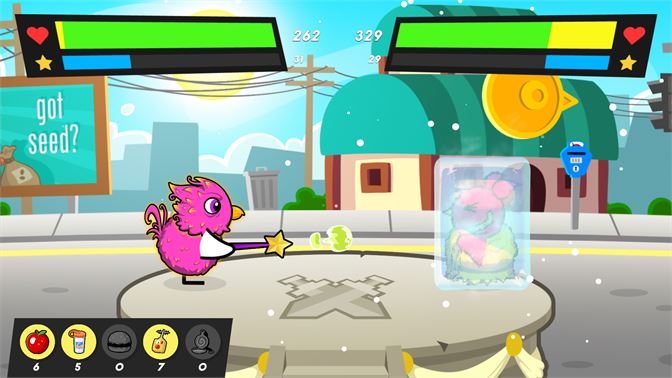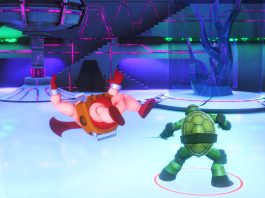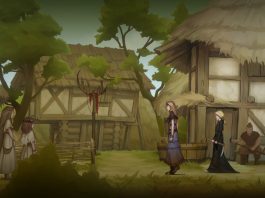Roughly three hours into playing Duck Life Adventure, I had to put down the pad and look up its history. It’s such a bonkers curiosity that it had to have a story behind it. Lo and behold, Duck Life is a full-on franchise that’s completely passed me by. If you’ve grown up with Duck Life, as so many seem to have done, I want to apologise: you’re getting a review from a bemused 30-something who has only just learned about the bazillion games that make up the Duck Life series. This is my initiation: I hope I do it justice.

If you’re one of those who has been exposed to the Duck Life games, this represents a bit of a glow-up. While the Flash game visuals are still there, the Duck Life formula has been applied to an extremely Pokemon-like game world. You are free to explore, moving from town to town from an isometric viewpoint, which is a huge step up from the 2D screens you’re used to. The basics of the series are still there – you’re levelling up individual stats so that you can refine your performance in the game’s Battles and Races. It’s just been padded out with the Zelda-like joys of filling out a world map and unlocking paths to new regions.
If you’re one of those who hasn’t come to a Duck Life game before, well, there’s a lot to unpack. Looking at screenshots, you’re probably under the illusion that this is a shallow game for kids. While it’s certainly accessible for kids to play, it has depth and ambitions that almost take it into RPG areas. You might make the justified assumption that it’s been made in a week with some dusty old Clip Art, but the shoddy art style is kind of the point. The series hasn’t deviated for 13 years, and it’s not going to start now.
Everything kicks off with a bit of character creation, as you’re given some basic tools to make the duckling of your choice. Then it’s off to the Duck Life Adventure island, where you’re immediately presented with a choice: do you want to prioritise Battles or Races? Having made your choice, you are moved left or right, the bridge collapses, and you begin your adventure.
Anyone who has played a Pokemon game will feel immediately at home. The perspective and movement is the same, as is the rhythm of moving through caves, grasslands and passes on the way to the next town. Scattered around these passes are Pokemon trainers – sorry, Battlers or Racers – who will challenge you to defeat them in return for coins, power-ups, fancy hats, coats and/or weapons.

But instead of calling on your squad of electric rats, you’re participating yourself. Battles are automated and JRPG-style, where you’ll hit each other until someone falls over. You can toss in a power-up or time a press of the A button so you generate a critical hit, but that’s it. The Races are similarly automated, with your duckling merrily navigating a course of obstacles. You can chuck in those power-ups again, but you can also press A to boost. This carves a chunk out of your stamina, and running out means that the lazy reprobate just falls asleep and you lose. Managing your stamina becomes essential.
After your first couple of Battles and Races, it becomes clear that your duck must be more try-hard than mallard, so improvements need to be made. In most towns there is a training dojo, and it’s here that you can raise one of your duckling’s many stats. It’s at this point that you realise that you are in a reasonably dense RPG, as each level goes up to 50, and there are various skills to train, like Jumping, Swimming, Strength and Health. These skills have a dual use, as they allow you to access parts of the world map, like a Cut or Surf HM in Pokemon, but they also improve you in some facet of the Battles or Races. You can amp up your stamina and speed in Races, for example, and decrease the time it takes after taking a fall.
Raising your skill levels is a wee bit bizarre. Each stat has its own minigame to play, and these independently feel like casual mobile titles. There’s a Flappy Bird-meets-Bionic Commando game, where you get rewarded with XP for progress before whacking into a stalactite. Another is reminiscent of Fruit Ninja, but you stab in cutlery rather than use a sword. There’s a Doodle Jump one, a Tricky Towers one, a Trials one, and so on. Each minigame might boost you a level or two, so you have to hop back in repeatedly as you climb up the levels to the elusive 50.

It’s a bit like AppStore: The MMO. You’re chucked into various casual games, and are rewarded with XP and levels for persisting with them. That in turn improves your duckling, so that you can actually start winning the various Races and Battles scattered about. The difficulty curve on the Races and Battles is so steep that you have to level up, as you’ll be losing after the second or third encounter.
There’s some other stuff around the edges, as the various hats, weapons and clothes give you elemental benefits and stat boosts in Battles, while quests give you some nice flavourful things to do in the vicinity. You might have to gather ingredients or steal a gem from a mansion, and they’re welcome diversions. A Yugi Muto-looking duck also crops up in villages, offering you games of chance in exchange for the jelly coins you get from quests and a few other sources.
That’s the gist of it. You’ll need to master all of your skills to get to new areas, with some requiring the defeat of a Gym-like baddie at a Battle and Race. We suspect that a lot of this will feel familiar to Duck Life veterans, while some mechanics are new to the franchise. For a newbie like me, though, the experience was… a bit underwhelming, really. There are a couple of major reasons for that, and I couldn’t get out from under their shadow.
Duck Life Adventure can’t help but feel like a mobile game. That’s not to immediately dismiss mobile games, as some of the best of the year have come from that platform (Grindstone has swallowed more hours than I’d care to count). But Duck Life Adventure is at pains to ensure that every game is automated and/or a one-button experience. On mobile that would make sense, as your inputs are limited and you’re generally snatching a game while on the crapper, or waiting on a bus. For an Xbox game, when you’ve got so many options at your disposal, and you’re playing because you have some dedicated time to lose yourself, Duck Life Adventure just isn’t a snug fit. We wanted to be more stimulated than we were.

This is a horrible combination with how grindy Duck Life Adventure is. To make any kind of progress, you’re going to need level 50 in core skills (even then, I was butting my head against some of the challengers). To get this near-essential level 50, you are going to have to spend 30 minutes or so in each flash game, and that was more than I was willing to give. Knuckling down for 30 minutes of Flappy Bird, simply to get to the next region (there’s no repeatable content outside of the dojos, so you will HAVE to grind to progress) was not my brand of fun. On mobile, it might have felt enjoyable for a few minutes before switching app, but on console it feels laboured. You half expect a billboard to smother the game screen, offering progress for cash. We couldn’t even persuade our kids to grind the levels for us, the unappreciative scumbags.
The grind is forgivable on some minigames, as Duck Life Adventure updates some classics in impressive ways. There are two Doodle Jump-like games that are moreish, and the cutlery-ninja game is swift and harmless. But for every winner there’s a stinker, and we never want to see the Trials HD or Flappy Bird clones again. They manage to strip away the speed or thrills from their genres, and are measly with the XP to boot.
To stick the flipper in, the Battles and Races that you’re working towards, the payoff for all of this grinding, are particularly drab. The majority of the strategy is in preparing for them, pumping in time and gold to get the power-ups that’ll pull you through. Sure, there’s some enjoyment to be had in the timing of their use, but they are like playing Final Fantasy or Mario Kart and only being given control of the Item action. It’s not enough, and it’s certainly not the payoff that you deserve after hours of casual game-grinding.

It’s a shame, as there’s depth here, as well as a long play-time as you uncover the game map. The quests add a little plum sauce to proceedings, and the Pokemon structure has its own joys as you get rewarded for traipsing off into corners of the game map. But these are the frills, and the core of the game simply can’t support them.
While the Pokemon structure gives Duck Life Adventure on Xbox some joy and depth, the rest betrays its roots as a mobile game. You’ll be tapping the A button repeatedly in countless casual minigames, all in the name of grinding up levels. Before long, realisation will dawn that you could be doing something, anything else, rather than succumb to its yawning emptiness. Unless you’re a Duck Life fan, it’s best to duck this one.







